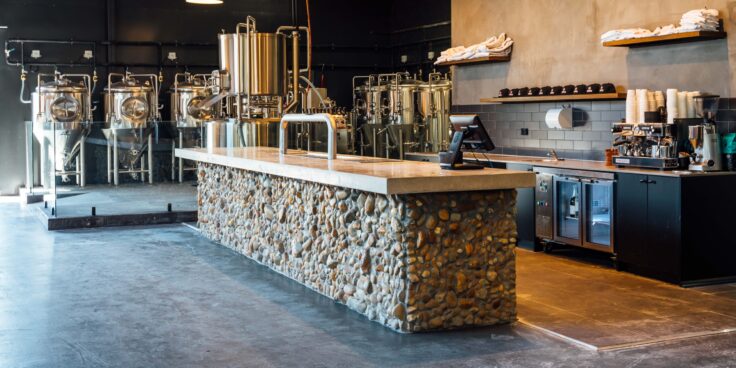
Quality in the brewery

Sometimes I think brewers forget they are making food. Delicious, dependably flavourful and satisfying liquid food. Whether Beer as food is nutritious or harmful is a discussion for another day and perhaps another audience. We can however agree that you and others like you notice the vast difference in beer quality between breweries, between large scale manufacturing vs your local brewery and even dare I say it between breweries all owned by the same multinational company brewing beers under licence. We have all heard ‘oh this tastes way better from the brewery in Dublin’ without naming any names. The purpose of this article is to address the three primary categories of a quality in the brewery – Microbiological, chemical-physical and sensory. By understanding these aspects of quality the brewer can ensure repeatable quality beer time and time again.
Quality:
‘The standard of something as measured against other things of a similar kind; the degree of excellence of something’.
Quality control in any brewery should encompass the following broad categories:
- Microbiological
- Chemical-physical
- Sensory
Microbiological – one of the biggest improvements in beer over the centuries is that the brewer can control the introduction of microorganisms within their wort/beer in known quantities. It’s important to make sure that only the intended microorganisms such as your selected yeast strain make it into the beer. Refermentation from microbial spoilage can be responsible for many noticeable beer faults. It’s important to understand where micro organisms may come from and understand key aseptic techniques to mitigate future quality issues.
Sources of microorganisms in the brewing process:
- Water
- Malt, adjunct, hops
- Yeast contamination
- Processing aids
- Operating materials
- Additives
- Ambient air
- Secondary contamination
- Containers e.g. kegs and packaging materials
- Personnel especially ‘cold side’ operators/brewers
Key considerations for mitigating microbial contamination in the brewing process
- Write and ensure all cleaning SOPs are followed to the chemical manufacturer’s recommendations.
- Visually inspect all goods receivable for visible signs of contamination
- Do not store any equipment on the floor especially around drains
- Train yourself and staff in aseptic technique/ basic microbiological principles
- Clean all equipment and spills directly after use
- Ensure regular pest control is in place
- Ensure adequate healthy yeast is pitched and fermentation is proceeding by twice daily extract checks (every 12 hrs)
- Ensure wort ph specifications are achieved in the brewing process
– Pre boil 5.2 – 5.5
– Post boil 4.7-5
– Post fermentation 4.1-4.5
Chemical-physical:
This category is probably the most well understood by many brewers/home brewers. It involves characterising and measuring the physical and chemical composition of water, wort & beer usually defined by a well thought out and planned recipe. The ultimate purpose being to maintain the quality of the raw materials, the intermediate and the finished products in your brewery.
Key Objectives and checks for Chemical-physical quality control:
- To analyse raw materials, i.e. water, malt, processing aids & hops for beer production (usually supplied by the manufacturer or sent to a specialised lab)
- Testing of the intermediate and finished products at the appropriate time during
production i.e. wort, green beer and finished beer.
Typical quality checks in a brewery:
- Malt COA and grist composition after milling
- Sparge water and mash water pH
- Mash pH
- Starch iodine test – no colour change should be detected and the iodine remains orange
- Last runnings pH
- Last running 0P
- Pre boil 0P – as per recipe calculation no greater than .2 .3 0P above target.
- Pre boil pH – ideally 5.2 to 5.5 no greater than 5.8
- Post boil 0P (OG/OE) – as per recipe calculation no greater than .2 .3 0P above target.
- Post Boil pH – ensure a drop of .3 to .5 has occurred from pre boil pH
- Yeast pitching rate – as per recipe
- Yeast cells per/ml in FV – as per pitching rate
- Twice daily gravity checks (every 12 hrs) – ensure a reduction is occurring until a plateau is reached
- Determine apparent attenuation limit and real attenuation limit – this will allow more precise recipe calculation overtime as you know how much a particular yeast will ferment and therefore allow you to target final attenuation and therefore Alcohol by volume.
- Record the generation of the pitched yeast – do not reuse more than ten times
- End of fermentation pH
- Finished beer pH
- Diacetyl
- Dissolved C02 in finished beer
- Dissolved O2 in finished beer

Sensory:
Taste the beer and every stage (except boiling!) by tasting wort after mashing, after wort cooling, during fermentation and after maturation you will develop a natural intuition of how your product is going. The human olfactory is very sensitive and can be trained with practice. Being familiar with the flavours and aromas of the product at each stage of the process and developing a tasting panel in the brewery which evaluates finished product you have an inexpensive and effective means of sensory quality control.
What to evaluate as and brewer and tasting panel:
- Raw materials, malt hops, water yeast as part of a pilot program
- Intermediate and finished products, wort, green beer and beer.
- Carbonation, clarity (recipe dependent) and cloying sweetness should be at the forefront of tasters mind at a bare minimum. Additionally pay close attention to the balance of bitterness to sweetness/body – a perfect harmony exists between these two which makes beer very palatable and easy to consume.
For the final sensory test ensure the product is free from common beer faults
- Hydrogen sulphide – rotten egg
- Trans-2-nonenal – papery wet cardboard, stale
- Diacetyl – buttered popcorn or buttery
- Light struck – skunky, freshly brewed coffee
- Isovaleric – sweaty socks or stale cheese
- Metallic – blood like metallic flavour
- Chlorophenolic – antiseptic mouthwash
- Acetaldehyde – green apples, paint
- DMS – cooked canned sweetcorn
- Mercaptan – drains or rotting garbage
- Sulphidic, Sulphur dioxide – struck match or young white wine
Why choose Spark:
There are many questions that may come up when you are planning your brewery build. Spark has installed 50 breweries Australia wide and have all the answers. We work closely to support your decisions before, during and long after a project is complete.
We don’t just supply equipment, we deliver profitable operating businesses and every project gets an engineer, project manager and brewer to ensure high quality beer and speed to profitability.
If you want a long term partner not just an equipment supplier – get in touch



